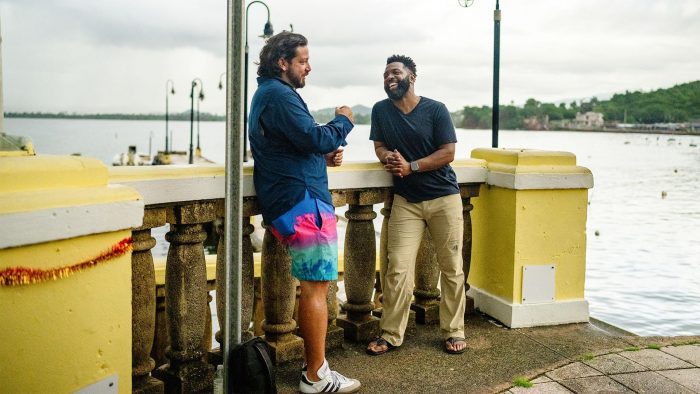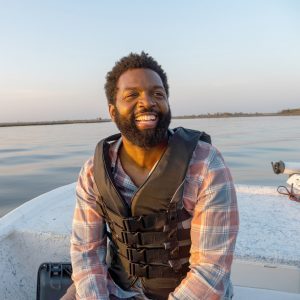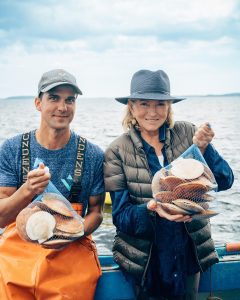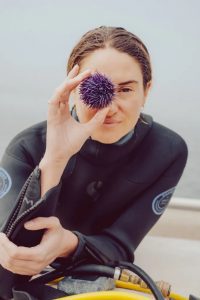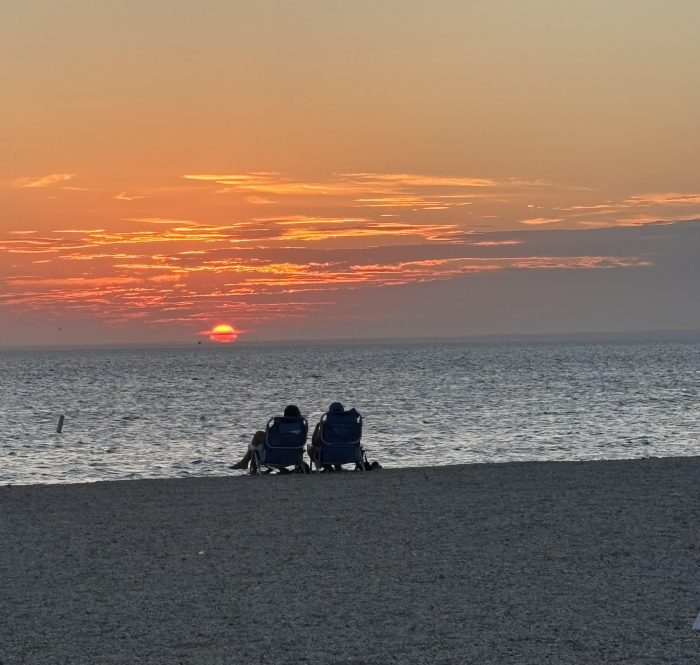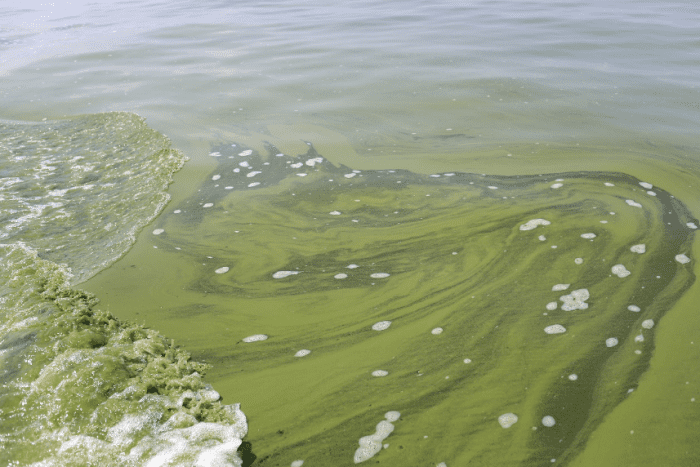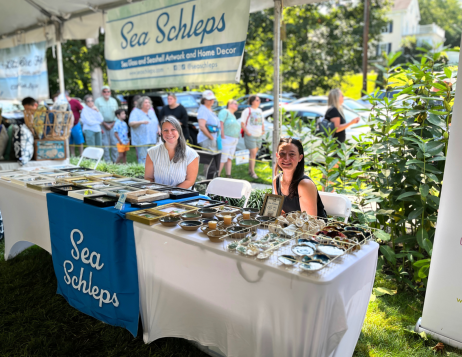By John L. Turner

I had walked for 20 minutes before reaching the intended destination: Hunter’s Garden in Eastport, located in the eastern end of the Manorville Hills, an 8,000-acre section of the LI Pine Barrens.
An opening in the forest, Hunter’s Garden is the spot of a longstanding tradition — where bay- and sportsmen, farmers, and others that live off the land, many bearded and sporting all patterns of flannel shirts, come together to share steaming bowls of chowder and camaraderie. The soup and socialization takes place each May in a secluded pocket in the Hills, reached via a sandy road coming off County Route 51. An etched marker stone commemorates the event.
I sat on the ground, leaned against the slanted marker stone, took a deep breath and began to listen. Birdsong soon surrounded me. A few seconds passed and I detected a robin singing in the distance followed by another song that sounded like a robin’s but richer — a Rose-breasted Grosbeak! Lucky for me the grosbeak came closer and I could see it moving around in a lower stretch of the tree canopy.

I slowly raised my binoculars to enjoy one of the more beautiful songbirds found in eastern North America — a black and white plumage pattern with a bright red triangle in the middle of its breast which gave rise to its macabre common name of “Cut-throat”. (A bit of an apocryphal story told by Roger Tory Peterson, who more than anyone else popularized birding, is that he once was contacted by a woman in Texas wondering what she could do to help a bird in her yard that had been shot in the chest and was bleeding profusely; not to worry he reported, explaining it was just the bird’s natural plumage).
As the minutes rolled by I heard and saw more birds — a Red-eyed Vireo sang incessantly from somewhere in the overhead canopy and much lower to my right came the “veer-veer-veer” of a Veery, a type of thrush. And then, as if almost on cue, its cousin the Wood Thrush began its ethereal song from deeper in the woodland. Scientists have learned that this species, as with many other birds, is actually capable of singing two songs simultaneously due to the complexity of its syrinx or voice box. Soon, the Veery came into view and I could see its distinctive plumage generally indicative of the thrushes — a spotted throat, white belly, and buckskin brown back. These two thrush species are fairly common breeding birds in the Pine Barrens along with the less common Hermit Thrush.
Other sights unfolded. A large glade of wood ferns with highly lacy fronds spilled away from me on the other side of the trail creating an interesting visual effect. It was if the ferns were always fuzzy and out of focus due to the highly dissected form of the fronds. No matter how I looked at them, even with squinted eyes, they appeared out-of-focus although, in reality, they weren’t. Being in the shade the tree canopy overhead formed another series of interesting textures and patterns and I appreciated the distinctive architecture of each tree species. The same held true for individual leaves.

Sitting still I began to more acutely pick up movement and soon came the butterflies. In quick succession I saw a mourning cloak fluttering through the understory and then a darker, more rapidly moving butterfly which I realized was a red-spotted purple. And then a tiger! as in Tiger Swallowtail, the largest butterfly found on Long Island, erratically dashing over shrubs in the understory.
While sight and hearing were the two senses at first most triggered by the immersion in this extensive forest, smell and touch soon came into play. I began to feel the coolness of the earth I was sitting on and the texture of the slightly uneven ground. Scuffing a little of the leaves out of the way caused a pleasant earthy aroma to waft upward, an aroma very much like one experiences while planting vegetables in the spring garden.
It also changed my focus from looking at trees and birds both distant and afar to immediate close-ups of soil creatures including a pill bug (which you may know by its more colorful name: a roly-poly). I was instantly transported back to my youth when I and friends routinely found roly-polys while turning over logs to investigate what creatures might be living beneath.
I was practicing a version of what the Japanese refer to as Shinrin-yoku or “forest bathing,” an activity in which one immerses oneself in a forest and uses the full suite of senses — sight, sound, touch, smell and even taste — to take in the sights, sounds, odors, and textures of the forest, thereby achieving “sensory engagement.”
Shinrin-yoku doesn’t have to take place only in a forest although the practice is quite conducive there; it can be in a meadow or along the shoreline or other natural or mostly natural landscapes. And research, most conducted in Japan where the practice began in the early 1980’s and is widely practiced today, shows demonstrable mental and physical health benefits from regular episodes of forest bathing.

These peer-reviewed, scientific papers indicate that practitioners are calmer and more relaxed, have lower stress hormones, and are generally happier from regularly “bathing” in the forest. According to the research “forest bathers” also sleep better and have an enhanced ability to focus. The benefits also accrue to those who experience nature indoors — a study of hospital patients with a wall in their room displaying a forest scene, or who could visually see the outdoors through a window, spend less time in the hospital than patients with no visual connection to nature.
To practice forest bathing you don’t have to sit still as I did. You also can gain benefits from a leisurely to mid-paced stroll through a forest. The key is to open your “sensory self” to the living landscape happening all around you.
After an hour or so I arose from my stationary ground-level seat, stretched some lightly aching muscles and slowly walked the mile back to the car, feeling physically and mentally relaxed yet with my senses quite alert to the surrounding forest landscape. I wondered: Is this state what a wild animal like a deer, fox, or box turtle always experiences?
I hope you take a bath soon.
A resident of Setauket, author John L. Turner is conservation chair of the Four Harbors Audubon Society, author of “Exploring the Other Island: A Seasonal Nature Guide to Long Island” and president of Alula Birding & Natural History Tours.








